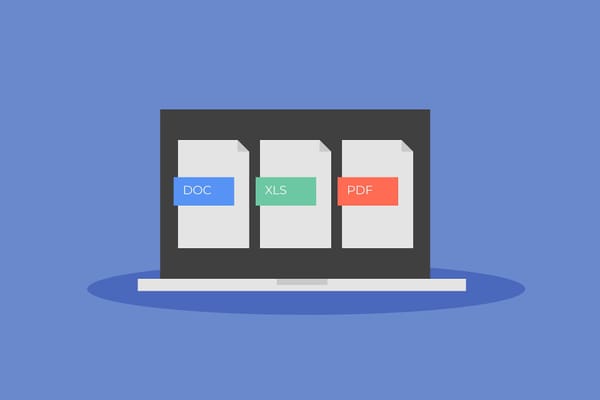Implementing Secure Electronic Health Record (EHR) Systems in Very Small Healthcare Businesses

Industries are gradually migrating to digital-only environments as technological advancements steadily grow into the backbones of nearly every field. Healthcare organizations are no exception, as the digitalization of this industry through Electronic Health Record (EHR) systems has increased overall efficiency, accessibility and coordination.
However, these advancements also expose vast amounts of sensitive data to the Internet, a universe still plagued by digital threats.
Large and Small Healthcare Organizations Face Similar Threats
Large healthcare institutions typically employ dedicated IT teams, as their expansive budgets make it easier to address security concerns. Unfortunately, very small healthcare businesses, including solo practitioners, specialized medical offices and small clinics, face a more daunting challenge.
These organizations often lack resources and expertise, impeding them from securely navigating the complex cybersecurity landscape and exposing them to cyber threats. Considering that these small businesses also handle sensitive patient information, security must be prioritized.
Our guide aims to help these businesses manage the complexities of implementing secure EHR systems by tackling topics like choosing a secure EHR platform, leveraging encryption, and establishing robust access control mechanisms.
Choosing Secure EHR Systems
Selecting a fitting EHR system for your small healthcare organization should be a cornerstone of a secure healthcare practice. For very small businesses, this process involves identifying a system that fits operational needs while still prioritizing security features tailored to the unique risks that healthcare organizations face.
An appropriate EHR system for very small healthcare businesses should meet the following requirements:
- Regulation Compliance - It is of the utmost importance to choose an EHR system that complies with healthcare regulations, such as HIPAA. Compliant systems usually ensure data protection standards.
- Data Backup and Recovery - A secure EHR system should be able to prevent data loss through automatic backups and efficient recovery options in the event of a breach or system failure.
- User-friendly Interface – One of the most overlooked aspects of a system is the interface. Although not entirely linked to security, this component is essential to ensure that the staff can operate it with ease. Overly complicated systems often lead to user errors that can inadvertently pave the way for security vulnerabilities and breaches.
- Vendor Reputation and Support - When choosing a system for your healthcare organization, consider the EHR vendor’s track record and support capabilities. Well-regarded vendors with previous experience in healthcare security should be prioritized, as they are more likely to keep their systems up to date in terms of functionality and security.
Safeguarding Sensitive Patient Data Through Encryption
Encryption is one of the first lines of defense against threat actors, and EHR systems are no exception. It can prevent sensitive data from falling into the wrong hands, whether at rest (server-stored) or in transit (in the process of being transferred).
Very small healthcare business owners should understand how encryption works and why it’s essential to data integrity and confidentiality.
- Encryption at Rest – Data stored within EHR system servers should be encrypted. If an attacker gains access to the physical hardware or databases, encryption makes it impossible for them to access the data without the decryption keys.
- Encryption in Transit – Data that moves between devices, locations and networks should be encrypted so that unauthorized parties cannot intercept and read it. This is especially important when staff access EHR systems remotely or share data with third parties.
- Key Management – Secure EHR systems should have robust encryption key management protocols. Only authorized personnel should have access to encryption keys to avoid negating the benefits of encryption.
Access Controls Can Help Limit Access to the Right People
Unauthorized access is one of the most significant risks healthcare organizations face. It goes without saying that robust access controls allow only authorized parties to access sensitive data, and only within the scope of their role.
Some of the ways access can be regulated to fit each business’ specific needs include:
- Role-Based Access Control (RBAC) – Ensures that users can only access data that is relevant to their job function. For instance, receptionists should only have access to basic patient information, while nurses and doctors should be able to access a broader range of medical records.
- Multi-Factor Authentication (MFA) – MFA strengthens security by requiring users to provide two or more verification factors to access the system. These factors range from passwords and security questions to physical tokens, authenticator apps and biometric identification (fingerprints, face recognition).
- Audit Logs: Keeping detailed logs of who accessed what data and when is critical for identifying and mitigating security breaches. Regularly reviewing access logs can help spot suspicious activities before threat actors can strike.
Strengthening Security with Dedicated Software
While an EHR system is essential to manage patient data, a dedicated security solution to protect against the evolving cybercrime landscape is equally important.
Very small healthcare businesses can benefit from added protection by opting for a dedicated security solution, such as Bitdefender Ultimate Small Business Security.
It offers robust protection that works alongside EHR systems to safeguard sensitive information, ensuring the operational continuity of small healthcare organizations. Its comprehensive list of features can help you defend against a wide range of cyber threats. Key features include:
- Sensitive Data Protection – Advanced threat detection and encryption technologies can help you safeguard sensitive patient data and other critical information.
- Scam Protection – AI-powered modules help you detect and deter scam attempts before they can do harm.
- Email Protection – Secures communication channels by filtering irrelevant emails, including scam, spam, and phishing attempts.
- Real-Time Monitoring – Continuously monitors for unauthorized access, account breaches and other digital intrusions, notifying owners in real time of suspicious activities to allow for swift responses to threats.
- Premium VPN – Includes premium VPN that ensures all communications, especially those involving sensitive healthcare data, remain secure and encrypted.
Conclusion
Although implementing a secure EHR system for very small healthcare businesses can go a long way in protecting sensitive patient data, choosing the right system for your needs can be daunting.
Carefully choosing an EHR system that uses encryption for data protection and comes with strict access controls can help these businesses build a strong foundation for secure digital healthcare delivery.
Frequently Asked Questions About Implementing Secure EHRs
- How to secure EHR?
Securing an Electronic Health Record (EHR) system is a complex procedure that involves several steps and layers of protection. These include choosing a secure platform that complies with healthcare regulations like HIPAA, implementing robust encryption and access controls, regularly updating systems with security patches and conducting ongoing staff training on cybersecurity.
- How to secure electronic records?
Electronic records can be secured with a combination of encryption and role-based access controls to protect sensitive information both in storage and transit. Regular audits, backups and monitoring for suspicious activity can further strengthen security.
- What is the implementation phase of the EHR?
The implementation phase of an EHR involves multiple critical stages, including carefully planning and selecting an appropriate EHR system, properly configuring the system to meet the business’s specific needs, training staff to use the system effectively, transferring existing patient records, thoroughly testing to ensure the system works properly, and continuously monitoring to detect potential issues and make necessary adjustments.
tags
Author

Vlad's love for technology and writing created rich soil for his interest in cybersecurity to sprout into a full-on passion. Before becoming a Security Analyst, he covered tech and security topics.
View all postsRight now Top posts
How to Protect Your WhatsApp from Hackers and Scammers – 8 Key Settings and Best Practices
April 03, 2025
Outpacing Cyberthreats: Bitdefender Together with Scuderia Ferrari HP in 2025
March 12, 2025
Streamjacking Scams On YouTube Leverage CS2 Pro Player Championships to Defraud Gamers
February 20, 2025
How to Identify and Protect Yourself from Gaming Laptop Scams
February 11, 2025
FOLLOW US ON SOCIAL MEDIA
You might also like
Bookmarks








